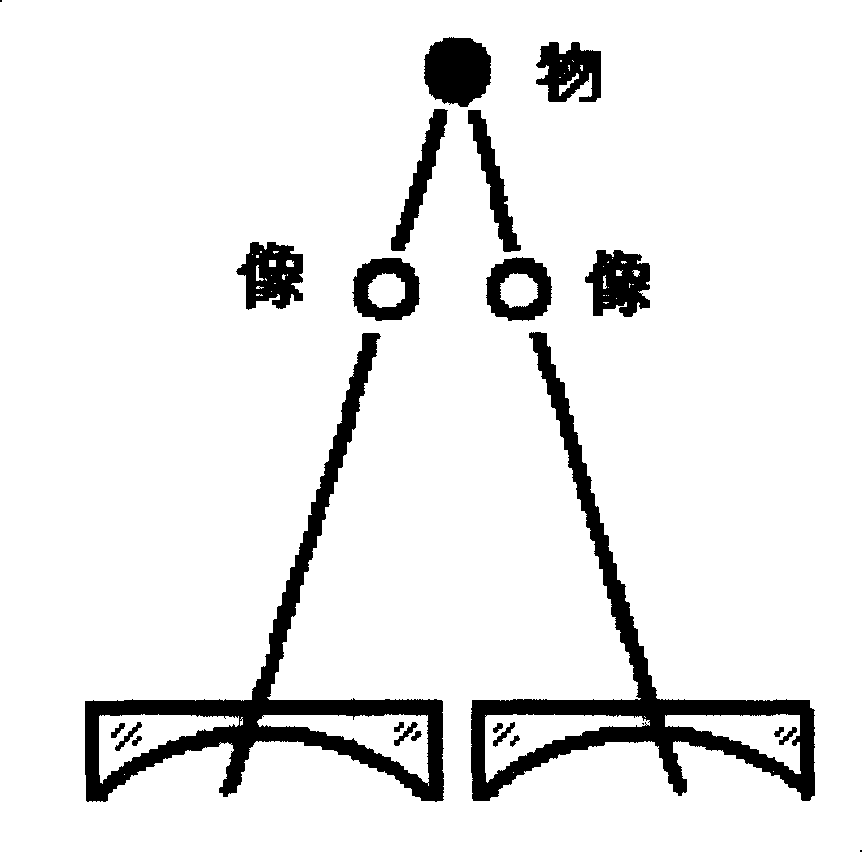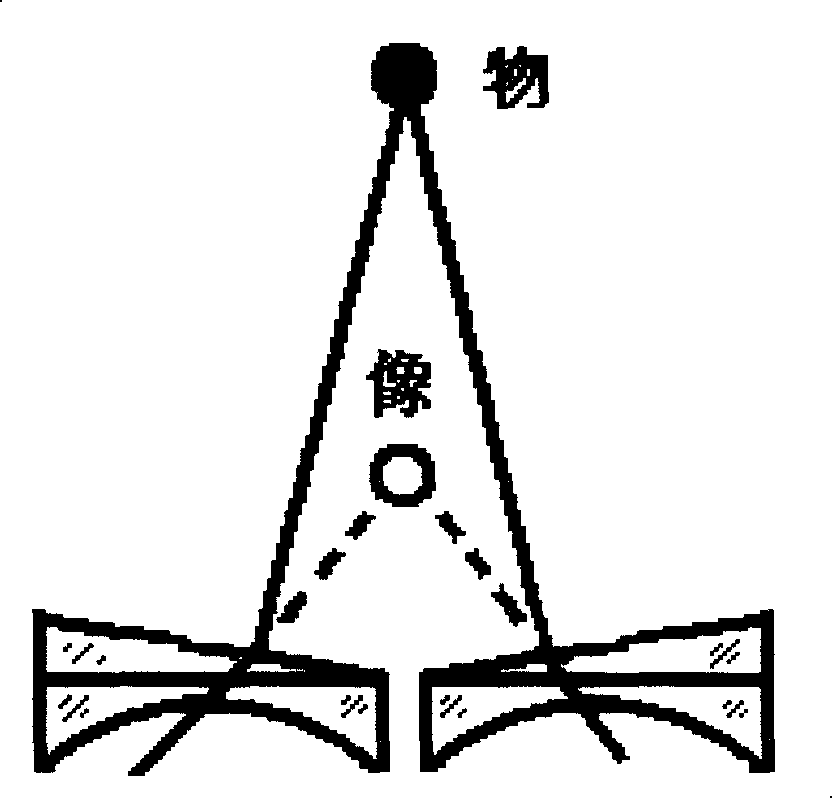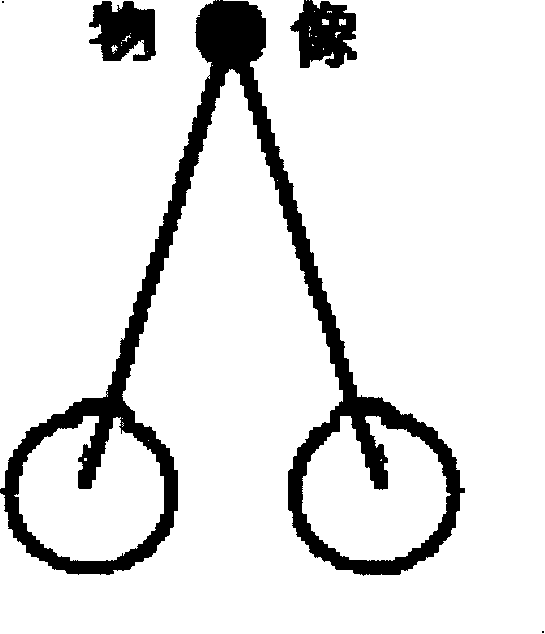Myopia glasses and lens
A technology for spectacle lenses and left spectacle lenses, applied in the field of spectacle lenses, can solve problems such as discomfort, easy fatigue, and limited lens size, and achieve the effects of reducing discomfort and reducing chromatic aberration
- Summary
- Abstract
- Description
- Claims
- Application Information
AI Technical Summary
Problems solved by technology
Method used
Image
Examples
Embodiment 1
[0042] Embodiment 1: The difference between the myopia glasses and the prior art myopia glasses is that the distance between the optical centers of the left and right spectacle lenses is smaller than the user's near-pupillary distance. The polarizing lens is also a kind of "composite spectacle lens equivalent to compounding a prism on the myopia lens of the prior art", but the compound spectacle lens may not be the polarizing lens. A kind of myopia spectacles shown in Fig. 18 is respectively pasted a prism 1 with a base facing outwards on the front surface of the left and right two spectacle lenses 16 of the prior art myopia spectacles, that is, the spectacle lenses corresponding to both eyes are equivalent to the prism 1 from the base to the outside. The compound spectacle lens that outer prism 1 is combined with the concave lens sheet 16 of prior art myopia glasses to form. Wherein the two spectacle lenses of the prior art myopia glasses are all spherical spectacle lenses, a...
Embodiment 2
[0043] Embodiment 2: The difference between the myopia glasses shown in Figure 25 (front view) and Figure 26 (top view sectional view) and the prior art myopia glasses is that the eyeglasses are the composite eyeglasses of the myopia glasses of the prior art and a prism 6. The optical centers of the left and right compound spectacle lenses coincide with the connecting shaft 28 of the bridge of the nose. There is a rotatable connecting shaft 28 on the bridge of the nose of the spectacle frame. Rotating around the axis can change the distance between the left eye lens and the right eye lens. Distance and changing the orientation of the prism base in compound ophthalmic lenses. The orientation of the prism bases in the compound spectacle lenses for myopia glasses can also be all turned outwards downwards or outwards upwards with the rotation. The temples can also be rotated 29 degrees, so it can be used by people with different face shapes.
Embodiment 3
[0044] Embodiment 3: as shown in Fig. 20 (front view schematic diagram) and Fig. 21 (overhead sectional schematic view), the difference between myopia glasses and prior art myopia glasses is that the left eye glasses and right eye glasses corresponding to both eyes have the same optical center 21 (a concave lens) compound spectacle lens 22. The myopia glasses correspond to the left-eye lens and the right-eye lens of both eyes, which are integrated and integrally formed with the frame. The distance between the geometric center 23 and the optical center 21 of the spectacle lens corresponding to the left eye or right eye of the myopia glasses is greater than 1.5 centimeters (the optical center and the geometric center both refer to the position when looking at it from the front), and the myopia glasses are bilaterally symmetrical. The left spectacle lens and the right spectacle lens of the myopia glasses shown in Figure 20 (front schematic diagram), Figure 22 (top view sectional ...
PUM
 Login to View More
Login to View More Abstract
Description
Claims
Application Information
 Login to View More
Login to View More - Generate Ideas
- Intellectual Property
- Life Sciences
- Materials
- Tech Scout
- Unparalleled Data Quality
- Higher Quality Content
- 60% Fewer Hallucinations
Browse by: Latest US Patents, China's latest patents, Technical Efficacy Thesaurus, Application Domain, Technology Topic, Popular Technical Reports.
© 2025 PatSnap. All rights reserved.Legal|Privacy policy|Modern Slavery Act Transparency Statement|Sitemap|About US| Contact US: help@patsnap.com



